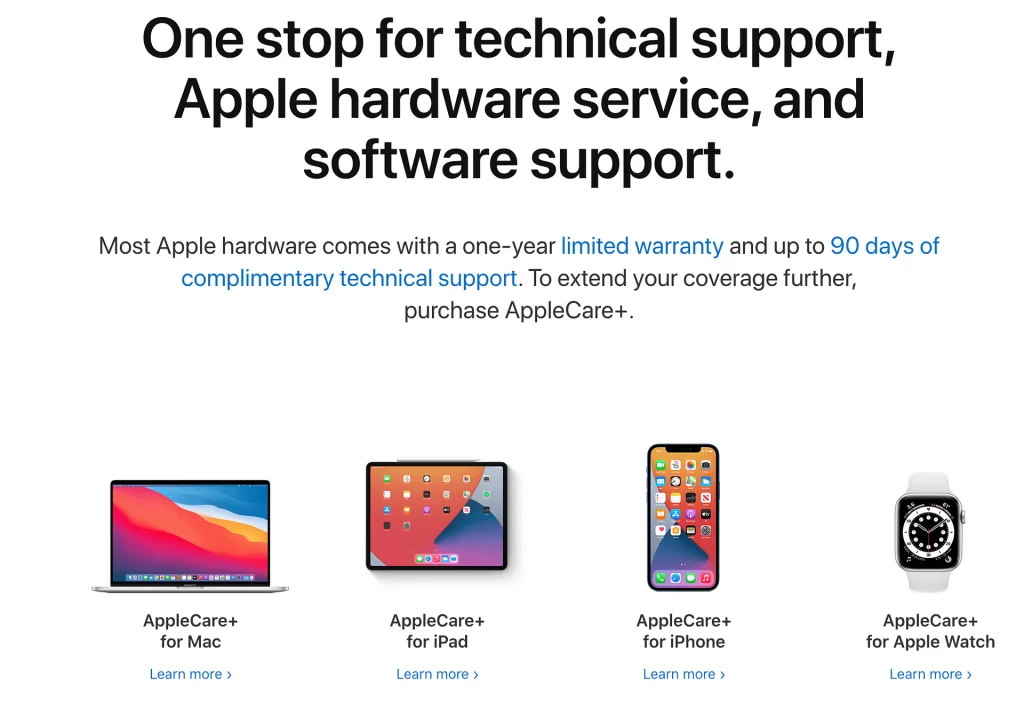The 4 Return Types Every Shopify Merchant Should Know

Product returns get a bad rep of being costly, complicated, and nothing but an indication of customer dissatisfaction.
But here’s the truth about returns: They’re unavoidable for ecommerce retailers and they aren’t going anywhere.
So instead of trying to fight returns, retailers can thrive from understanding returns and the different return types they can offer to shoppers.
Each return type works differently, so we’ve outlined the 4 biggest ones below.
1. Exchanges
An exchange allows the customer to return the product from their original purchase and swap it with another product from your store.
Making exchanges as easy as possible for shoppers are all the rage right now.
Exchanges are a return type commonly used to “save the sale” of the original purchase in the case of a return.
However, they can get tricky.
Exchanges can be abused by customers and become a costly consequence of trying to avoid refunds.
While this shouldn’t stop you from offering exchanges altogether, it is important to understand how exchanges work on Shopify to stay in control of your policies.
There are 2 different types of exchanges that you could offer your customers.
Variant Exchanges

Image Source: The Timeless Tunic – Rough Linen
An exchange often means the customer ALMOST got what they wanted. Sometimes, a customer may just want a different version of the product that they purchased.
A variant exchange solves this problem in a single step by allowing the customer to return the original purchase for the same product in a new size, color, or other variation that the product is offered in.
Products that have multiple variations are perfect for offering variant exchanges.
In a variant exchange, the customer can only choose from the product’s different variations. Any other products that catch the customer’s eye will have to be bought as a new purchase or full catalog exchange.
Full Catalog Exchange

A full catalog exchange allows the customer to exchange their original purchase with any other product offered by the retailer.
The customer could either choose a variant of the original product or choose a new product entirely to exchange with the product from the original purchase.
If the chosen product is valued at a lower price than the original purchase, then the customer will receive a refund of that difference. If the chosen product is valued higher, then the customer will pay that difference.
Full catalog exchanges are utilized by retailers that aim to turn returns into a new purchase. This can increase your average order value and extend your customer lifetime value.
If utilized correctly, full catalog exchanges turn a negative product experience into an opportunity.
2. Warranty Returns
With all the hype around exchanges, warranties can be forgotten as a return type. But, with the global extended warranty market projected to be valued at $170 billion by 2027, warranty returns are emerging as one of the more common return types.
Warranties, or product protection plans, are service contracts that protect shopper products from certain damages or accidents.
Apple Care for your iPhone is an example of a product warranty.

Image Source: Apple – Apple Care
Many Shopify merchants put warranties in its own category because the product isn’t always returned and kept by the retailer. However, they should be considered as simply another return type.
Why?
From an operations perspective, handling a product warranty return is just like processing any other type of return.
Both require retailers to have a process for reverse logistics, meaning they need to have a system in place to funnel products backward through the supply chain.
Retailers will also need a returns management process, which is the system used to communicate and keep track of all returns information.
It’s already complicated enough.
Considering warranties separately just doubles that work.

Taking warranties into consideration when deciding on a returns management process will improve the efficiency of your business.
However, it’s important to note that there are different kinds of warranties that can be placed on products.
Extended Warranties
An extended warranty extends the duration that a product is protected beyond the manufacturer’s warranty.
This means that for a given number of days after the initial purchase, the customer can get their product repaired or replaced in the case of damage.
This option is typically offered to consumers that are considering big-ticket purchases to provide further peace of mind that their purchase will be protected.
Third-Party Warranties
Third-party warranties protect products that were bought from a third-party retailer, like Wal-Mart or Amazon.
Ecommerce merchants that have a third-party warranty policy promise their customers that they will repair or replace damaged goods even if it wasn’t directly bought from their store on Shopify.

Image Source: Groove Life – Warranties Page
The obstacle that many retailers face with third-party warranty returns is being able to verify orders when they weren’t directly made from their Shopify store.
However, being able to find a solution to this obstacle is what differentiates certain retailers from others. Protecting your products even when they weren’t bought directly from your online shop will stand out to your customers as exceptional service.
Plus, processing third-party warranty returns will help you collect information from customers that haven’t shopped directly at your Shopify store.
You can increase your mailing list, have a targeted audience to market to, and grow your sample for customer data.
Third party warranties are a terrific way to increase sales everywhere your product is sold.
Accidental Damages and Handling (ADH) Plan
ADH Plans protect product parts that were damaged during shipment.
According to our research, out of the 500,000 warranty returns we have processed to date, about half of them were due to damages.
That’s nearly 250,000 customers that would have walked away with a negative experience had the retailer not offered a product warranty.

ADH plans help to convince customers to make higher-risk purchases because they know the product will be protected.
Shopify merchants with ADH plans can also gather that data and potentially limit the percentage of returns received for damages.
Operationally, it’s important to have an efficient method of communication for customers to easily indicate which part is damaged when processing a return.
From there, the retailer must be able to receive the damaged part and send back a new part quickly, easily, and without anyone in the process getting confused as to what is happening with all the parts.
This could be a complicated process. Not having a good system in place beforehand could create chaos when warranty returns start to come in, which will hurt the trust created with your customers.
3. Store Credit
Store credit returns give customers a gift card or points that could only be redeemed in that store.

Like an exchange, store credit encourages customers to try other products within the store that they may be more satisfied with.
The difference between the 2 return types is that store credit does not need to be redeemed at the time of the return, which means that some credit issued may never be redeemed.
While this may seem positive because the merchant gets to keep the sale without losing another product, unredeemed store credit is an indication of a churned customer, or one that never returned for another purchase.
A high churn rate can hurt your overall customer lifetime value.
Collecting data on store credit returns would provide your company with the insights it needs to be proactive about reducing the amount of unredeemed credit.
4. Refunds
A refund, the simplest and most common return type, is when a customer gets their money back for returning a product.

Shopify merchants have the power to offer full or partial refunds and decide who covers shipping.
A customer’s positive returns experience depends on receiving their money back in a timely manner.
To successfully do this, however, the merchant needs to:
- Have a scalable communication process between the customers and your service team.
- Easily give customers the instructions and materials they need to process a return (I.e., shipping label).
- Be able to quickly communicate when returned products are received across the company.
All of these moving parts can get complicated fast and prolong the time it takes for a customer to receive their refund.
Having the proper internal processes in place to follow through with the returns promises made to customers avoids further frustration that can turn a negative experience into a worse one.
Conclusion
Receiving a high volume of return requests from your Shopify store can be frustrating and feel like a sign of failure.
But, the fact of the matter is, the rise of ecommerce has made returns an expectation of online shoppers. The more your online store grows, the more returns you’re going to get.
While this offers an operational challenge as the reverse logistics of your company becomes more complex, returns are a major area of opportunity.
Having a strategic returns management process can improve internal communications, enhance customer experience, save time and energy for your staff, and provide data-driven insights to improve product performance.
In order to do this, however, it’s important to know what is considered a return type and how that affects your reverse logistics.
We hope this article was able to give you more insight on just that.


